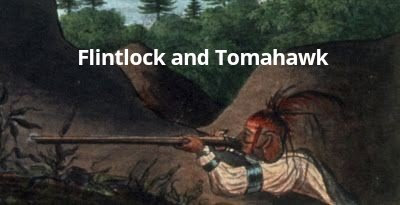 A man who leads his warriors into battle at the age of 72 gets my respect - read more about this imposing leader -Text from here.
A man who leads his warriors into battle at the age of 72 gets my respect - read more about this imposing leader -Text from here. A noted Wyandot chief of the Porcupine clan, born at Detroit in 1742, died at Cranetown, near Upper Sandusky, Wyandot county, Ohio, in Nov. 1818. He was called Le Chef Grue, or Monsieur Grue, by the French; the English knew him as Crane. When in his prime Tarhe was a lithe, wiry man, capable of great endurance.
He fought at Point Pleasant on the Kanawha under Cornstalk in 1774, and it is said that, of the thirteen chiefs who participated in the battle of Maumee Rapids, or Fallen Timbers, in 1794, when the Indians met with such disastrous defeat at the hands of Wayne, Tarhe was the only one to escape, and he was badly wounded in the arm. Largely through his influence, and in the face of great opposition, the treaty of Greenville in 1795 was made possible, and he ever after held its provisions inviolate, even to opposing Tecumseh's war policy from 1808 until the War of 1812. He remained faithful to the American cause during this conflict, and, although more than 70 years of age, marched at the head of his warriors through the whole of Gen. Harrison's campaign into Canada, and participated in the battle of the Thames, Oct. 5, 1813, in which Tecumseh was slain. From the close of the war until his death in 1818, Tarhe became well known to the settlers in central Ohio, "many of whom were honored by his friendship and benefited by his influence." Harrison described him in 1814 as a " venerable, intelligent, and upright man," and at another time, while speaking highly of several important chiefs with whom he had been largely in contact, he designated Chief Crane as the noblest of them all.
He was chief priest of his tribe, and as such was the keeper of the calumet which bound the tribes north of the Ohio in a confederation for mutual benefit and protection. After his death a mourning council was held at Upper Sandusky, attended by representatives of all the tribes of Ohio, the Delaware of Indiana, and the Seneca of New York, among the noted chiefs present being Red Jacket. The exact place of his burial is unknown. See Taylor in Ohio Arch. and Hist. Quar., ix, no. 1, 3, 1900.




Tarhe is my gggggrandfather, and I'm an enrolled member of the Wyandot Nation of Kansas. Tarhe was a traditionalist and followed some of the same ceremonial protocols as the Peace Maker in performing condolence speeches using strings of wampum to dry the tears. My interest in the revitalization of our Waⁿdat language, songs and ceremonies are to give honor to him as he thought of us future generations during the signing of the Greenville Treaty...an uncomfortable job for a warrior, but necessary for our survival as Wyandot people.
ReplyDelete